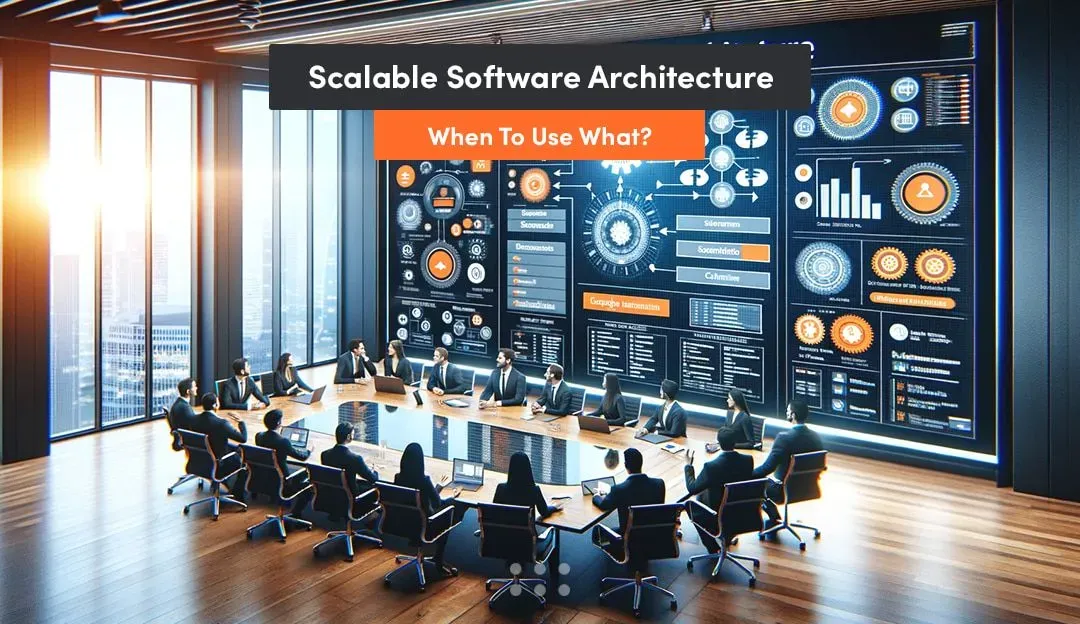Software Architecture Essentials for Scalable Systems is not just a buzzword but a discipline. As SaaS products, data-intensive platforms, and consumer apps scale, the underlying architecture must grow without sacrificing reliability, performance, or maintainability. In this guide, you’ll discover battle-tested principles and patterns that help teams design systems capable of absorbing traffic, data growth, and feature velocity. Principles like modularity and loose coupling underpin resilient, scalable designs, while patterns such as microservices architecture and event-driven architecture enable independent teams and responsive systems. By focusing on quality attributes, trade-offs, and practical implementation guidance, you’ll be equipped to evolve architectures as needs expand.
Viewed through a different lens, the topic becomes resilient, scalable software design built from composable services and clear ownership. This perspective emphasizes distributed systems thinking, service-oriented patterns, and boundary-driven modeling that keep business capabilities in focus while easing governance. Alternatives to direct naming—such as read/write separation, event replay, and bounded contexts—help teams reason about data flow without getting lost in technical baggage. In practice, practitioners choose cloud-native, containerized solutions and automation-driven deployment to achieve consistent delivery, fault tolerance, and rapid recovery.
Software Architecture Essentials for Scalable Systems: Principles for Growth, Reliability, and Cloud-Native Readiness
To design scalable systems, start with quality attributes that guide decisions about modules and interfaces. Prioritize modularity and loose coupling to reduce ripple effects when requirements shift. Favor high cohesion so each component has a focused purpose, which improves readability, testing, and reuse. Stateless services simplify horizontal scaling because instances can be added or removed without worrying about in-flight state; externalize state to a shared store or underlying data layer. Idempotent operations prevent duplicate work under retries, and deterministic behavior makes performance and reliability under load more predictable. When these core principles are embedded, teams build a foundation that scales with demand rather than merely adding more machines. The cloud-native context reinforces these patterns with containerization, service discovery, and automated deployment.
Beyond a good foundation, scale requires a patterning mindset. Choose architecture patterns that align with data flows, failure modes, and team organization. Microservices architecture supports autonomous teams and independent deployments but requires governance, automated testing, and observability to keep data consistent. Event-driven architecture decouples producers and consumers via asynchronous messaging, smoothing bursts and enabling graceful backlog management. CQRS and Event Sourcing can simplify complex domain logic while preserving a robust audit trail, though they demand disciplined modeling and tooling. Domain-Driven Design (DDD) helps map software models to business capabilities, supporting bounded contexts and scalable governance as teams grow. These patterns must be complemented by thoughtful data strategy, including partitioning, caching, and polyglot persistence where appropriate.
Implementing Scalable Patterns: Microservices, Event-Driven Architecture, CQRS, and DDD
Implementing scalable patterns means translating principles into concrete architectures. Microservices architecture, when done with discipline, yields independently deployable services and clearer ownership, enabling teams to scale features without locking the whole system. The trade-offs—data consistency across boundaries, distributed transactions, and multi-service observability—can be mitigated through patterns like eventual consistency, robust idempotency, and centralized governance. Event-driven architecture complements microservices by enabling asynchronous communication, buffering spikes, and improving resilience; using event buses or queues helps absorb load and supports replay for recovery and analytics. In a cloud-native architecture, containers and orchestrators like Kubernetes provide the runtime environment for fast, repeatable deployments, while service mesh and automations improve resiliency and observability.
For systems requiring auditability and complex business rules, CQRS with Event Sourcing and Domain-Driven Design (DDD) offer powerful tools. By separating write and read models, you can tailor data stores and indexing for throughput and user-facing queries, while an event log preserves a complete history for replay and analytics. Bounded contexts in DDD prevent creeping coupling across teams and aid scalable governance as the organization grows. Combining these approaches with a thoughtful data strategy—partitioning, caches at multiple layers, and polyglot persistence—helps you meet latency targets, maintain consistency where it matters, and keep operations under control in cloud-native environments.
Frequently Asked Questions
How does microservices architecture drive scalability in Software Architecture Essentials for Scalable Systems?
Microservices architecture enables independently deployable services, autonomous teams, targeted scaling, and fault isolation, aligning with core principles of modularity and loose coupling. However, it introduces challenges in data consistency, deployment, and observability that require disciplined governance, automated pipelines, and robust monitoring. Stateless services and externalized state simplify horizontal scaling, while patterns like event sourcing or shared data stores help manage state as the system grows.
What role does event-driven architecture play in achieving scalability and resilience in Software Architecture Essentials for Scalable Systems?
Event-driven architecture decouples producers and consumers through asynchronous messaging, allowing systems to absorb traffic bursts and recover from partial failures. Use event buses or queues to buffer, replay, and orchestrate work while designing for idempotent handlers and robust error handling to maintain correctness under retries. When used with CQRS and Domain-Driven Design, it supports scalable governance and clear bounded contexts, with observability across event streams as a key practice.
| Aspect | Key Points |
|---|---|
| Core Principles | Modularity and loose coupling; High cohesion; Stateless services; Idempotent operations; Deterministic behavior |
| Patterning for Scale | Microservices with disciplined governance; Event-driven architecture; CQRS and Event Sourcing; Domain-Driven Design and bounded contexts |
| Data Strategy | Relational databases, NoSQL, distributed caches; Partitioning/sharding; Read replicas; Caching; Polyglot persistence (with trade-offs) |
| Reliability, Observability, and Operations | Build for failure (retries, circuit breakers, backpressure, graceful degradation); Centralized logging, metrics, tracing; SRE guidance, runbooks, chaos engineering; Security and compliance |
| Concrete Architectural Patterns | Microservices; Event-driven; CQRS & Event Sourcing; DDD and bounded contexts; Cloud-native and containerization; Data governance and scalability |
| Data Management and Storage | Partitioned relational or distributed SQL for transactional load; NoSQL and wide-column stores for flexible workloads; Caching layers; Read models and materialized views; CQRS with asynchronous reads |
| Operational Excellence and Governance | Automation, infrastructure as code, automated provisioning; Observability as a design requirement; Instrumentation across latency, errors, throughput, and business metrics |
| Practical Guidance | Start simple with a modular monolith; Move to microservices with bounded contexts and strong automation; Prefer event-driven where variability exists; Use CQRS/DDD where appropriate; Design for observability and resilience; Consider total cost of ownership |
Summary
Conclusion



